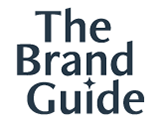Knowing who you want to talk to is the starting point for every brand. You don’t want to sell ice cream to Eskimos or sell fur coats to vegans. A strong definition of your target audience helps guide every decision that follows.
Find the right people to talk to and they will listen.
1. What you really offer?
It’s not just about the product. It’s about the benefit and transformation your product delivers.
Example:
We sell convinience and peace with our earphones
We sell convinience and peace with our earphones
2. Costumer description
Knowing the basic identifiers of your customer helps you aim your messaging.
> Age
> Gender
> Income
> Location
> Education
> Occupation
> Gender
> Income
> Location
> Education
> Occupation
3. Costumee Phsichology
Here you dig deeper. These traits are your keys to how to speak to them
> Values - Independence, design quality, sustainability
> Interests - Tech gadgets, travel, fitness, urban culture
> Personality - Curious, practical, socially aware
> Aspirations - To live smart and efficiently
> Interests - Tech gadgets, travel, fitness, urban culture
> Personality - Curious, practical, socially aware
> Aspirations - To live smart and efficiently
4. Pain points and needs
Find the struggles, often the ones they do not even consciously acknowledge, that your product can resolve. This is how you build a true connection
Example:
They are tiered from fidgety earphones with slow connections. They want something simple and muted.
Example:
They are tiered from fidgety earphones with slow connections. They want something simple and muted.
5. What motivates them
What will move them from awareness to action? What triggers a purchase?
Example:
They will act when they see the ease-of-use an simplicity of the design.
They will act when they see the ease-of-use an simplicity of the design.
6. Summary
Take the information that is gathered and Bring all your findings together into one clear and concise customer profile.
This becomes your reference when pitching the product or refining your messaging. It also sets a benchmark for all the next steps.
This becomes your reference when pitching the product or refining your messaging. It also sets a benchmark for all the next steps.
